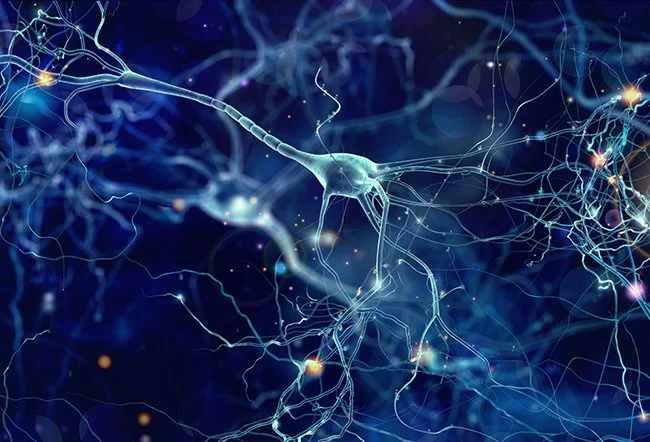Understanding Nerve Pain and How to Fix It
What are nerves?
 Nerves transmit information between the brain and the rest of the body. Some information goes from the body up to the brain, like temperature on your skin, and some information goes the other way, like the brain causing muscles to contract in order to move.
Nerves transmit information between the brain and the rest of the body. Some information goes from the body up to the brain, like temperature on your skin, and some information goes the other way, like the brain causing muscles to contract in order to move.
The nerves of the body are divided into two categories. We have the central nervous system (CNS) which involves the brain, brainstem and spinal cord. And we have the peripheral nervous system (PNS) which includes all the nerves from the limbs, organs and rest of the body that link up with the CNS at the spinal cord.
Fun Fact: the eyes are made up of nervous tissue and can be considered a direct extension of your brain, rather than a separate organ like the stomach or heart.
What is nerve pain?
Pain that is caused by irritation or damage to a nerve often feels different to regular musculoskeletal pain. It can feel like a stabbing, shooting, or electric feeling, often accompanied by tingling, burning, or prickling. Nerve irritation can even cause a temporary loss of feeling, numbness, or weakness.
What causes nerve pain?
There are multiple causes of nerve pain. Nerves can become irritated when they are physically compressed, such as from a tight muscle, an injured disc, or even a tight waist-belt. Irritation can also be caused by chemical irritation and inflammation, which can be influenced by our overall health, such as diet and physical activity levels. Furthermore, nerves can become damaged secondary to other health conditions, such as diabetes, shingles, heart disease, or autoimmune diseases.
How is nerve pain treated?
In most cases nerve pain has a very positive prognosis, meaning it can begin to feel better without too much intervention. Identifying the cause of the nerve pain is important, as each cause will have a different treatment approach.
Reducing irritation to the nerve is an integral first step, this can be achieved by altering positions that put the nerve on tension. Examples of this include adjusting the set up of your desk or workstation, altering the position of your car seat, retraining lifting techniques, getting properly fitted for your bicycle, and more!
 Manual therapy can also be utilised, helping to provide direct pain relief, relax muscles around the irritated nerve, and get the joints and pathways of the nerve moving well. Individually tailored exercises should also be used to increase strength and control, and gradually increase your exposure to movements that previously irritated the nerve.
Manual therapy can also be utilised, helping to provide direct pain relief, relax muscles around the irritated nerve, and get the joints and pathways of the nerve moving well. Individually tailored exercises should also be used to increase strength and control, and gradually increase your exposure to movements that previously irritated the nerve.
If your pain is quite bad, your doctor may discuss medications that target nerve pain more specifically than simple analgesics, like paracetamol.
If several weeks of conservative treatment, including lifestyle changes, manual therapy, exercises, and medication is having no effect, then it may be necessary to discuss other options with your doctor. This may include testing for other causes of nerve pain, utilising injections or nerve blocks, or possibly considering surgical options.
However, conservative treatment is routinely recommended as the first-line approach, as research consistently shows that the long term effects of non-operative treatment are similar or better than surgery.

